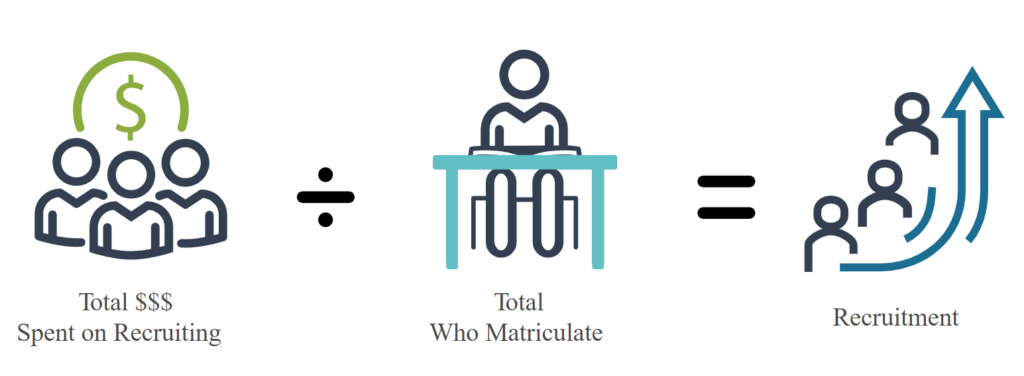
Marianne Sipe
January 8, 2024
Marketing, communications, and recruiting are part of a paradigm shift in higher ed. As the higher ed model changes, albeit slowly, institutions are starting to recognize the departments and activities around these three pillars as an investment and having holistic discussions about their role in retention.
Historically, marketing was not part of the higher ed model, and some schools still struggle to understand its function and how it benefits the institution. Likewise, the culture tends to lean toward the conversation that “recruitment needs to do more” as the enrollment numbers continue to take a downward trend—and as budgets tighten.
The key is to make smart, right-sized marketing and communication investments to attract and retain students.
Start by evaluating and collecting numbers assigned to time and expenditures. Investing a certain amount of time, money, and effort results in a measurable number — the Lifetime Value of a Student (LVS). This is the cost to acquire a student minus what it costs to educate them, at its most basic definition.
Use the following information to explore what it costs to bring in a new student, and a little on what it takes to retain them.
Student acquisition and education costs can vary significantly by student type. It may cost more to recruit a student from a rural area in the U.S. than a student who lives in close proximity to the campus. Different programs have varying operational costs. It will cost more to educate an engineering student than a student studying business.

Potential student acquisition and education costs include:
Variables for calculating cost typically include:
Higher ed administration and roles like institutional research are evenly split on whether to include salaries and benefits for recruiting, financial aid, and student workers in this calculation. While doing so will dramatically increase the cost per student, it also provides a more accurate understanding of total investment.
Most institutions do not include financial aid or general institutional marketing and branding costs when evaluating costs to attract and retain a student. One could argue the afore-mentioned list is all recruiting, as the work from the marketing and communications team is a holistic service. The work they do for other departments has a direct reflection on brand and institutional appearance. Regardless of where your institution will land in measuring recruitment and retention costs, make sure it is consistent year after year.
Related reading: Doing Enrollment Marketing Differently with Audience Data
Potential dollars generated by a student can fluctuate. Students who pay out-of-pocket for tuition generate more tuition dollars than students receiving institutional aid. Furthermore, graduates with greater earning potential may give more.
Potential dollars generated include:
Hopefully, revenue over costs will continue to grow after students graduate. While you will no longer be generating tuition revenue, you should be receiving annual gifts and even larger donations. If an institution is including the calculations of an alumni, then include the cost of gift acquisition in the calculation.
The paradigm of how institutions view marketing, communications, and recruitment is shifting. Doing the work and learning more about the institutional numbers will better position marketing and admission directors. Keep track of costs year over year (or cycle over cycle) to make fiscally minded decisions. Much of marketing and the heart of measuring ROI is increasing efficiencies and rooting out waste. Helping the rest of the institution understand how both departments play into the bigger picture of attracting and retaining students will undoubtedly generate cheerleaders and advocates.
We want to help you with your enrollment marketing needs. Learn more or schedule a consultation with Marianne.
Related reading: Recruitment Strategies That Nurture Dual Enrollment